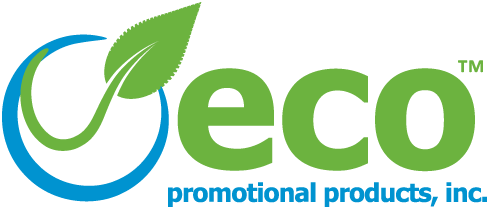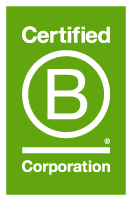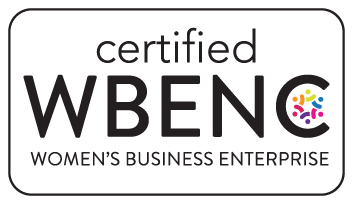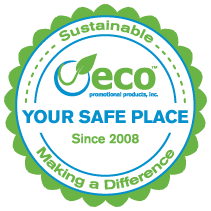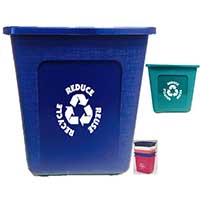Recycling Basics
By Christine McLean, Eco Promotional Products, Inc.
Recycling involves collecting, sorting and processing waste material and re-manufacturing them into new products. Collecting and sorting your garbage might seem complicated but it is something we should all learn to do. In doing so, we can help lessen the environmental issues that are caused by continually eliminating waste into landfills and depleting our raw materials when creating new products. Recycling reduces water pollution, protects wildlife, stops deforestation, saves energy, creates jobs, preserves landfill space, prevents global warming and creates a new demand for more recycled products, which helps our economy.
While it may be difficult to recycle every type of trash we produce, everything counts. Below are some guidelines to make recycling easier.
1. Know what can be recycled
Listed are common items that are recycled in most areas. Check to see if you have single stream collection (all items can go together in one bin) or whether you have to sort items. More and more areas are making it easy with single stream collection.
- Metal - soup, coffee cans, veggie cans, soda cans, pet food cans, tuna cans etc.
- Paper/Cardboard - newspaper, phone books, catalogs, ads, office paper, paper
bags, gift bags, tissue paper, paper towel and toilet paper tubes etc. - Plastic - soda bottles, shampoo bottles, water bottles, milk jugs, juice jugs, detergent jugs, yogurt containers etc. (#1-#7)
- Glass - beer bottles, wine bottles, pasta sauce jars, jelly jars etc.
2. Know what CAN’T be recycled
When you talk to your local waste services about recycling at home, ask what can't be recycled in your area as well as difficult-to-recycle items.
- No containers still containing food or beverages*
- No items covered in oil or grease
- No scrap metal - pots, pans, hangers, wires, appliances, chains, cables, nuts, bolts
- No broken glass or non-container glass – light bulbs, mirrors, Pyrex
- No sharps – injectable needles or lancets
- No Household Hazardous Waste – propane tanks or “empty” bottles of motor fluid
- No Styrofoam
- No mixed material packaging - paper envelopes lined with bubble wrap, dog food bags lined with foil, canisters made of 3+ materials
- No plastic containers larger than 2 gallons and no non-container plastics e.g. toys, furniture
- No plastic bags including chip bags or candy wrappers
- No compostable plastics
- No refrigerated or frozen food boxes – e.g. butter, pizza, beer, soda, TV dinner (though many markets are starting to except these)
3. Setup & prep
Place bins in areas you are most likely to use them — in the kitchen, home office, laundry room, crafting area etc. Rinse items to avoid pests and to make sure they aren’t too dirty to be recycled. Rinsing jars and cans immediately after emptying contents makes it easy and saves time from having to soak dried-on food. If items need to be sorted, provide multiple bins for each material. Setting up recycling areas at business and in schools is also a great idea.
4. Know where to recycle
Many communities have curbside collection programs where recyclable materials are picked up right outside your residence. If your community doesn’t offer curbside collection, there are often designated recycling drop-off locations where recyclable materials are collected. Earth911 is a great resource that helps you find a recycling solution by zip code. Most cities have hazardous waste drop-off locations that accept pool chemicals, paint, automotive fluids etc. And many top home office or electronic stores (such as Office Depot or Best Buy) accept things such as ink cartridges, computers, cords, cell phones, etc.
Once you have a system in place, recycling is easy. Remember, markets for recyclable materials continue to change so continue to check in with your local waste collection department for their recycling guidelines. If it can’t be recycled, try reusing it! Reusing or repurposing old items is another great way to keep unwanted waste out of our landfills.
This article is intended only to give a general overview of recycling basics. It is always best to check with your local waste management company to confirm what can and cannot be recycled.
* Ten states currently have a deposit-refund system for beverage containers. Deposit amounts vary from
2 to 15 cents, depending on the type of beverage and volume of the container.
Sources: National Recycling Coalition, sustainablebabysteps.com, johnsrefuse.com, Earth911

